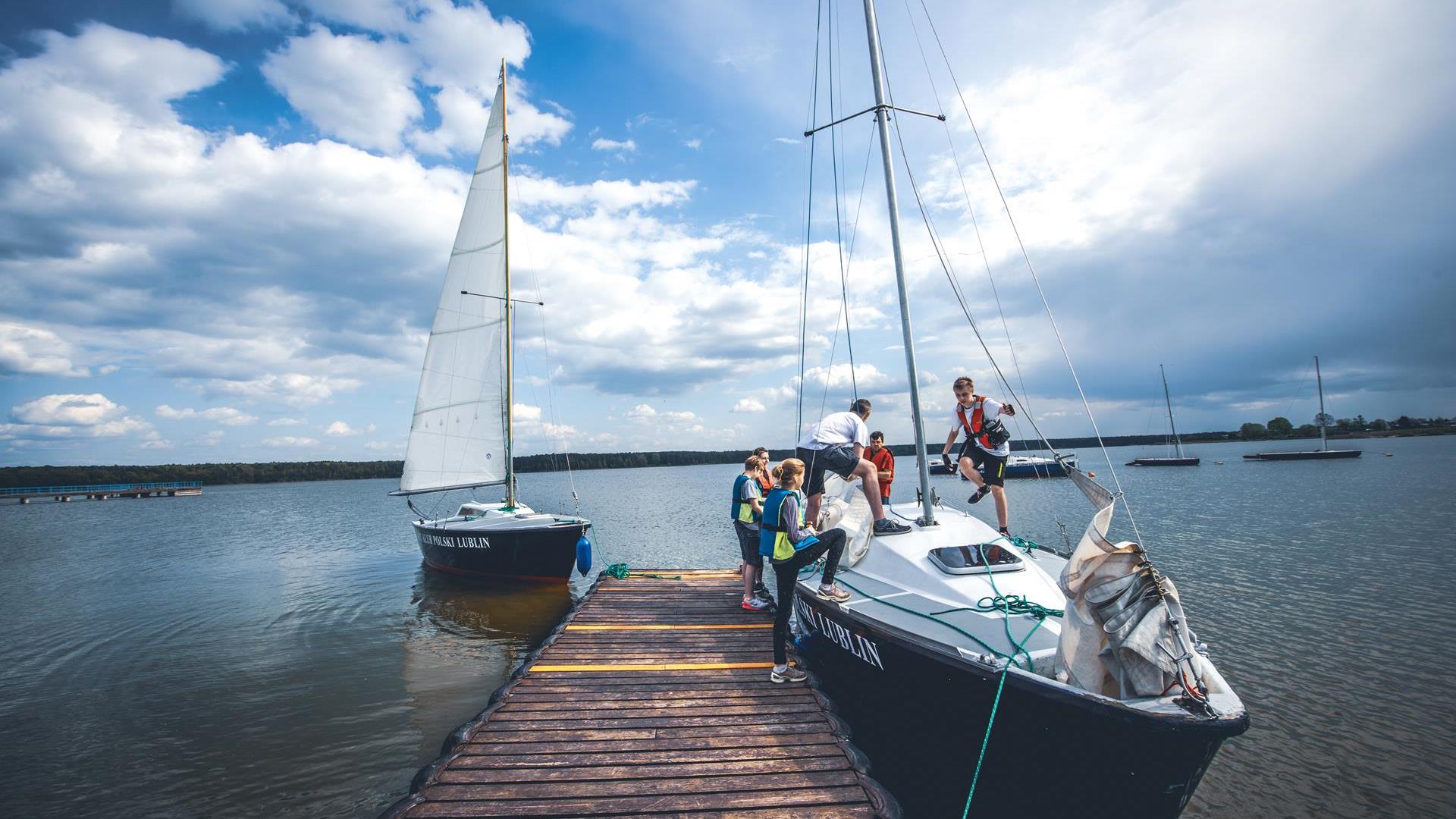TOP 10
Places you must visit
There are many reasons to come to Lublin! It is worth checking out the most important ones! Such top ten attractions are only possible in a city with 700 years of tradition, many religions, cultures and borderland charm.
Discover the greatest attractions of the City of Inspiration!
TOP 10

Old Town
Lublin Old Town amazes with its authenticity! There are over 110 monuments on 1 square kilometre, and most of them have retained their original shape. No wonder it has been included in the city list of Historical Monuments!
The oldest landmarks are the remains of the defensive walls: the Cracow Gate, the Gothic Tower and the Grodzka Gate. In the Old Town Square, there is the Crown Tribunal, with the Lublin Underground Route. The surrounding colourful tenement houses hide many legends and secrets, such as a winery with unique frescoes, known as the Fortuna Cellar. Lublin Old Theater is also worth attention. It is the second oldest theatre in Poland. While strolling around the Old Town, you cannot miss the Dominican Basilica. It is a monument related to the Polish-Lithuanian Union in 1569, honoured by the European Heritage Label. A landmark and a place where Lublin residents often meet is Po Farze square. It offers a beautiful view of the Lublin Castle, atypically located outside the walls of the Old Town.
In summer, the Old Town is full of restaurant gardens and becomes a stage for cultural events, and in winter, it is livelily illuminated.
Lublin Castle. The Holy Trinity Chapel and the Castle Tower - Donjon
The castle hides many treasures: from stone tools to cannons and from folk cut-outs to masterpieces of painting. Here you’ll find remembrances of the Nazi occupation of Lublin alongside Roman coins from the Amber Road. All because of the National Museum, which has chosen castle hill as its headquarters. The museum also has a famous painting by Jan Matejko commemorating the Lublin Union, which you will certainly not miss. Its dimensions are over 13 square meters. In the museum, there is also the table with the burned Devil’s Paw.
The times of the founder of the Lublin Castle – Casimir the Great are remembered by the medieval tower, known as the Donjon. It is 20 meters high and has walls up to 4 meters thick. It used to be defensive. Today you will find an exhibition on castle history there, and, if you want to climb the stairs, have a great view of the Old Town.
The Trinity Chapel is a must-see place. Gothic from the outside, inside, it hides Byzantine-Ruthenian frescoes. You find here a unique image of the king Władysław Jagiełło and a lot of vividly painted archangels.
No wonder the chapel was honoured with the European Heritage Label.
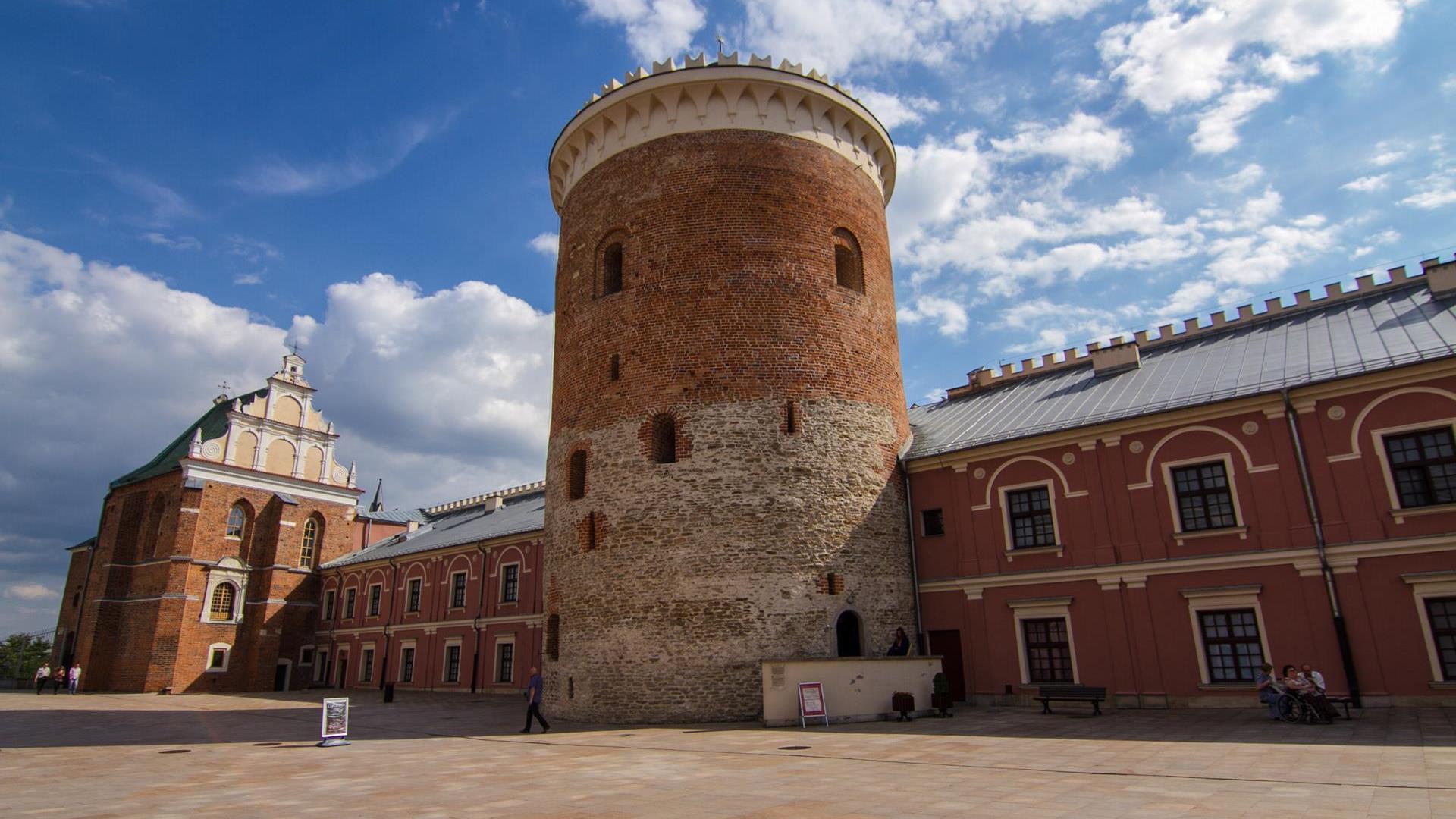
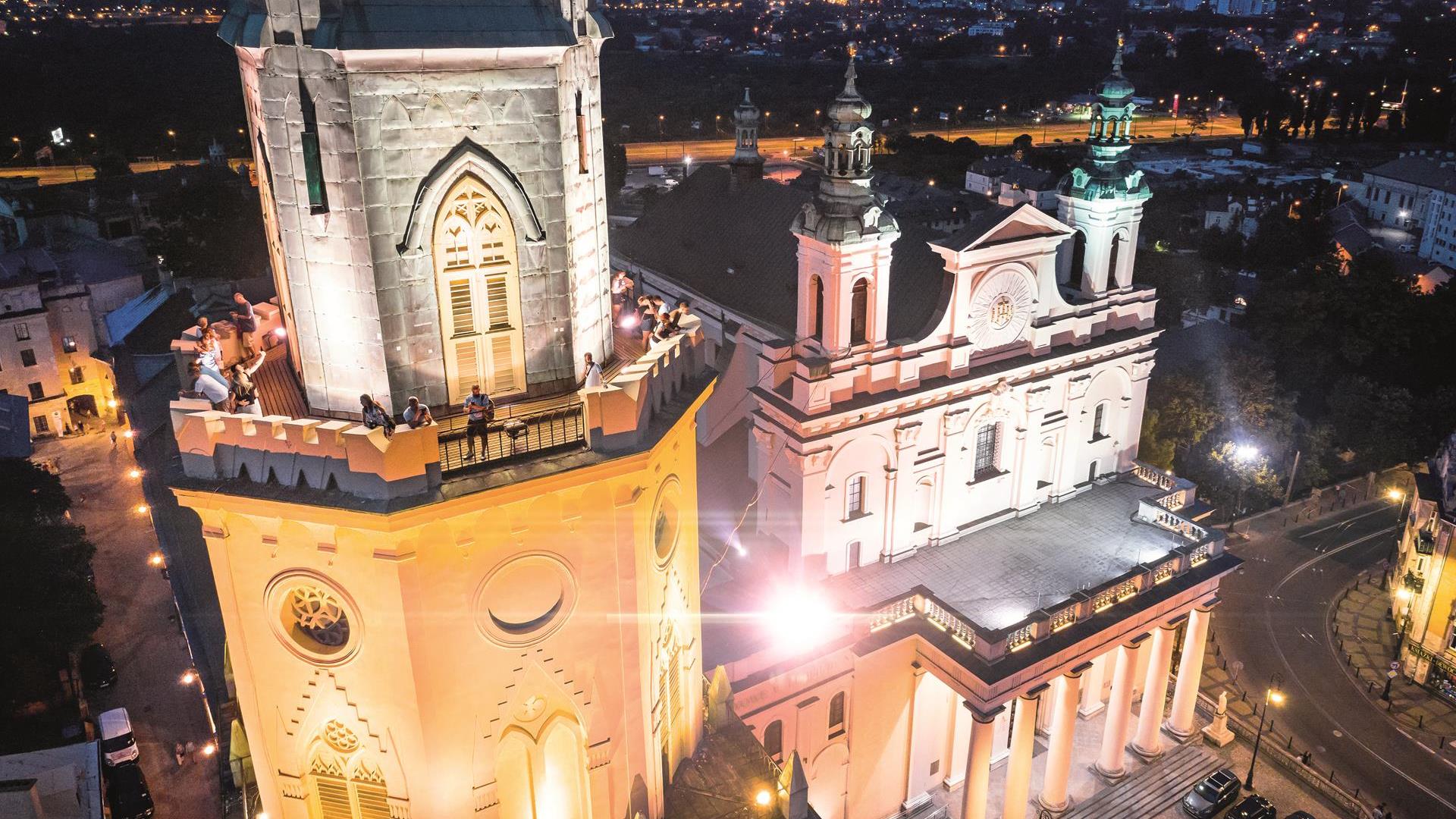
Lublin Cathedral and the Trinitarian Tower
Meyer’s illusionist polychromy delights everyone who enters this church. Built and furnished by the Jesuits, it was intended to lead people to God through the senses, especially the sense of sight. Indeed, it is something to behold!
The altar made of black pear wood, a baptismal font from the 14th century, and the cross from Lublin Tribunal are just some treasures hidden inside. Visitors can also visit the Acoustic Sacristy and the crypts.
The nearby Trinitarian Tower at its top has a tin rooster, which, according to legend, warned the inhabitants against the impending danger. Today, after climbing 207 steps, you can enjoy the view of the city from 40 m above the ground. In the tower, you will also find the Archdiocese Museum of Sacred Art.
Litewski Square with a multimedia fountain
Greenery, fountains and numerous benches make Litewski Square a popular meeting place for Lublin residents. The heart of the square is a modern multimedia fountain, which sparkles with many colours after dark. There, from May to September, you can enjoy the evening shows that refer to historical events and Lublin legends. If you see them once, you’ll want to come back because the harmony of water, light and sound is unique. On the square, you will also find the Monument to Józef Piłsudski, the Constitution of May 3, the Unknown Soldier or the obelisk commemorating the conclusion of the Union of Lublin, with the European Heritage Mark.
There are old palaces and a church of capuchins in the square vicinity.
Among the greenery of trees you will also find chess tables and child-friendly playgrounds with a Lublin accent in the form of wooden billy goats.
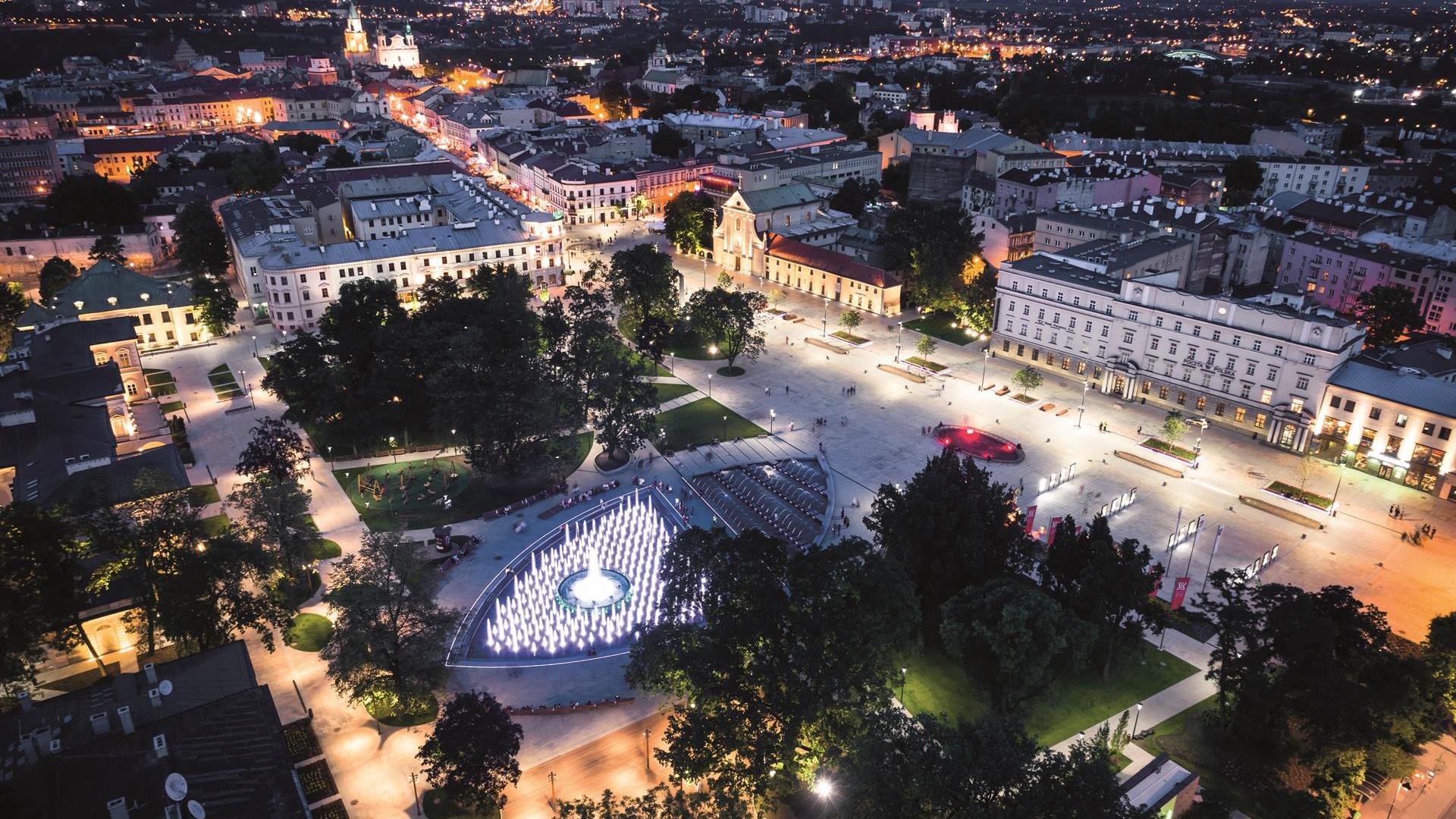
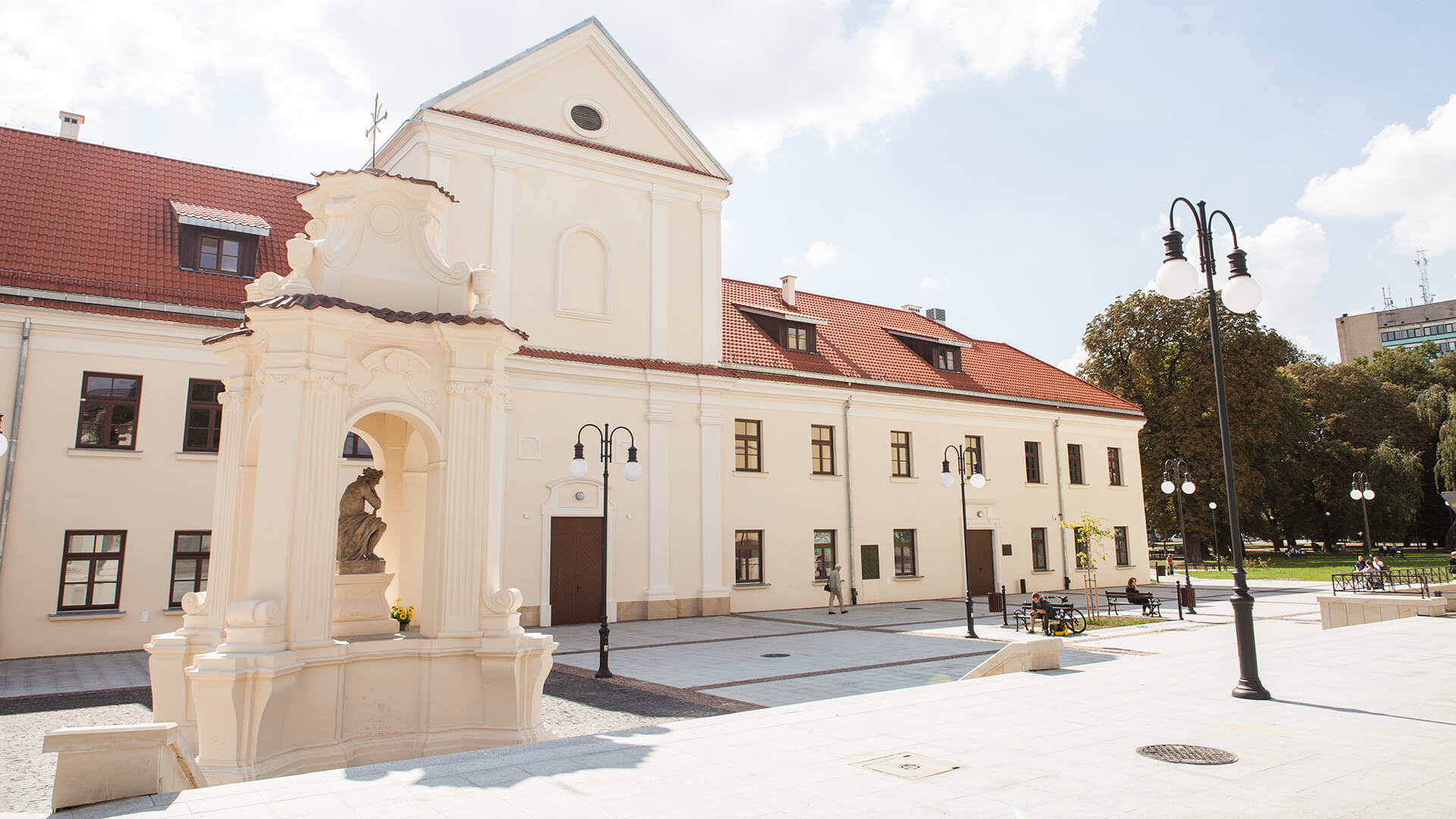
The Centre for Culture in Lublin
The interior of the old monastery hosts one of the most important local cultural institutions. Dosłowna Bookshop, Galeria Biała, Galeria ArtBrut, Centre for Intercultural Creative Initiatives “Crossroads”, Branch No. 2 of the Municipal Public Library, and the Cafe Centralna all are to be found there.
Where once the Visitation Sisters excelled spiritually, today art is thriving.
Concerts, performances, an ambitious cinema, the Lublin Dance Theatre, regular meetings and workshops for children and teenagers fill the centre with life. It is also the seat of the largest and oldest Lublin festivals like Theatre Confrontations International Festival, International Dance Theatres Meetings, Lublin Jazz Festival or Lublin Film Festival. Next to the building, you will find a green space with benches and a playground for children.
The State Museum at Majdanek
It is worth remembering even the darkest of history pages. Institutions such as the State Museum at Majdanek take care of that memory. The oldest museum in Europe commemorating the victims of World War II was established in the fall of 1944 in the area of the former German concentration camp, commonly known as Majdanek.
The museum, which covers 90 hectares, houses approximately 70 historical objects. Among them, places directly related to the mass extermination of the Jews and other nations are of the highest importance. One of the five prisoner fields and some administrative and farm buildings have also been preserved. In barracks no. 62 there is a multimedia exhibition “Prisoners of Majdanek”, which is worth seeing. The museum cultivates memory and promotes historical education about the German occupation in the Lublin region during World War II.
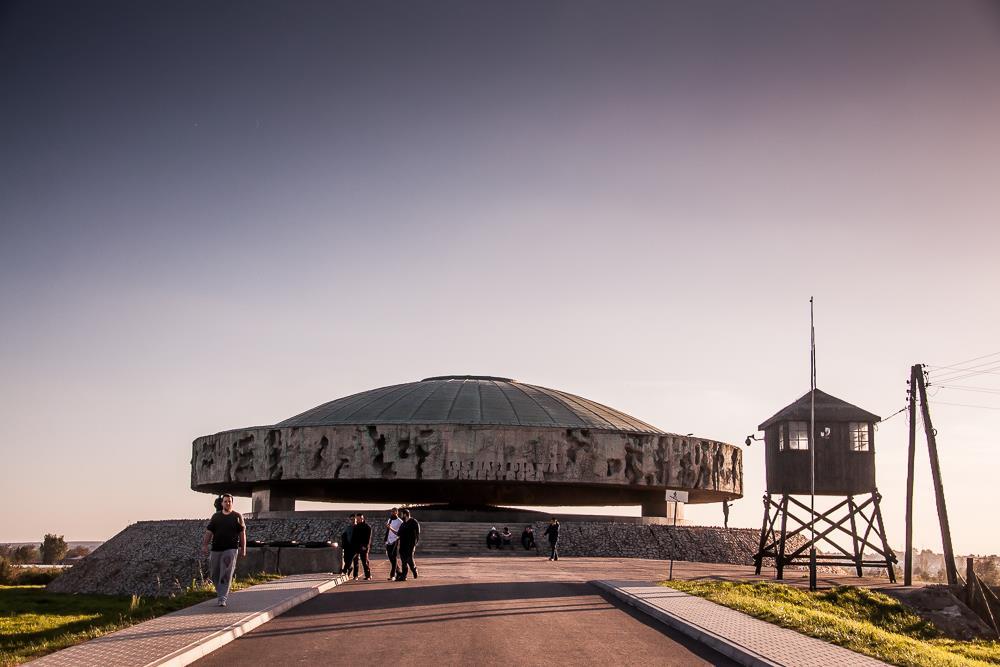

Grodzka Gate - NN Theater Centre
Jewish culture, religion, cuisine, and languages are indispensable to understand the greatest city in eastern Poland. In the Grodzka Gate – NN Theater Center, you will find all about the heritage of Lublin Jews. You can take a virtual walk through the streets that no longer exist and see the exhibition entitled “Lublin. Memory of the Place”, devoted to the last decades before the Holocaust. It is moving to see how intellectually, culturally, and economically vibrant Jewish Lublin was
You can look for traces of the city that no longer exists by going for a walk along the “Trail of the Remembrance of the Lublin Jews”. It is worth visiting the Yeshiva Chachmej Lublin with the Synagogue and the Museum of the History of the Yeshiva of the Sages of Lublin, the Chevra Nosim Synagogue or the Old Kirkut with the ohel of the Seer of Lublin.
Few steps from Grodzka Gate you will find the Memory Lantern that never goes out. It commemorates the tragically deceased Jewish citizens of Lublin.
Center for the Meeting of Cultures and Artistic Apiary
The modern face of Lublin is the Theatre Square and the minimalistic shape of the Center for the Meeting of Cultures, designed by Bolesław Stelmach. The industrial interior houses the halls of the Musical Theatre, Lublin Philharmonic and Hans Christian Andersen Theatre. You will also find the Brain Damage Gallery, the only art gallery in Poland and one of the first in the world dedicated to graffiti writing and its evolution, a cultural shop and restaurants.
Be sure to go to the glass observation decks and see the city from a different perspective. The roof of the CSK is full of plants typical of the Lublin region: buckwheat, herbs, wildflowers and apple trees. While walking among the greenery, you can spot beehives. There is the Municipal Artistic Apiary here, which is part of the centuries-old tradition of beekeeping in the Lublin region. An interesting fact is that honey from city apiaries is one of the cleanest. Local bees are happy to visit the nearby Saxon Garden!
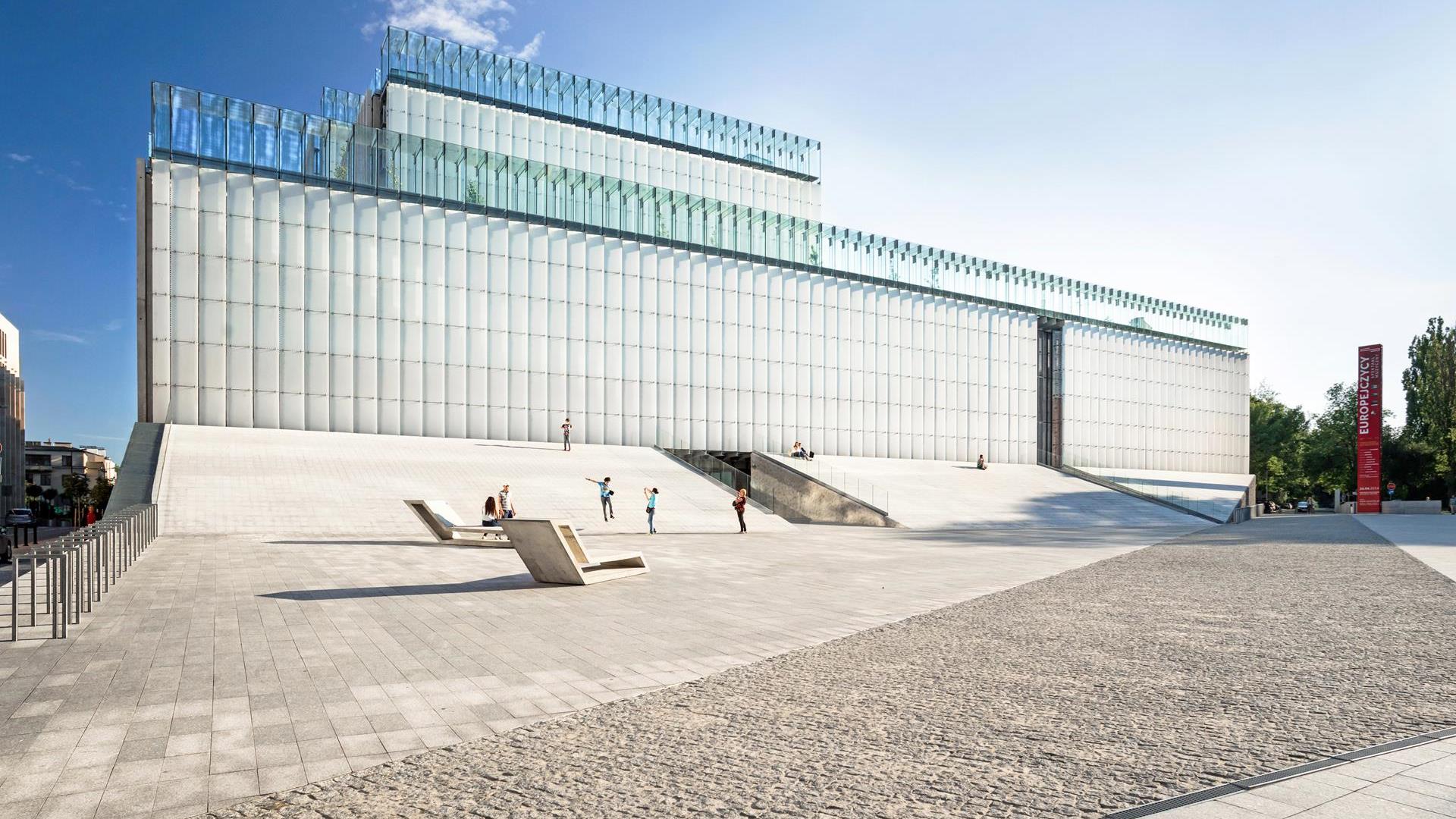
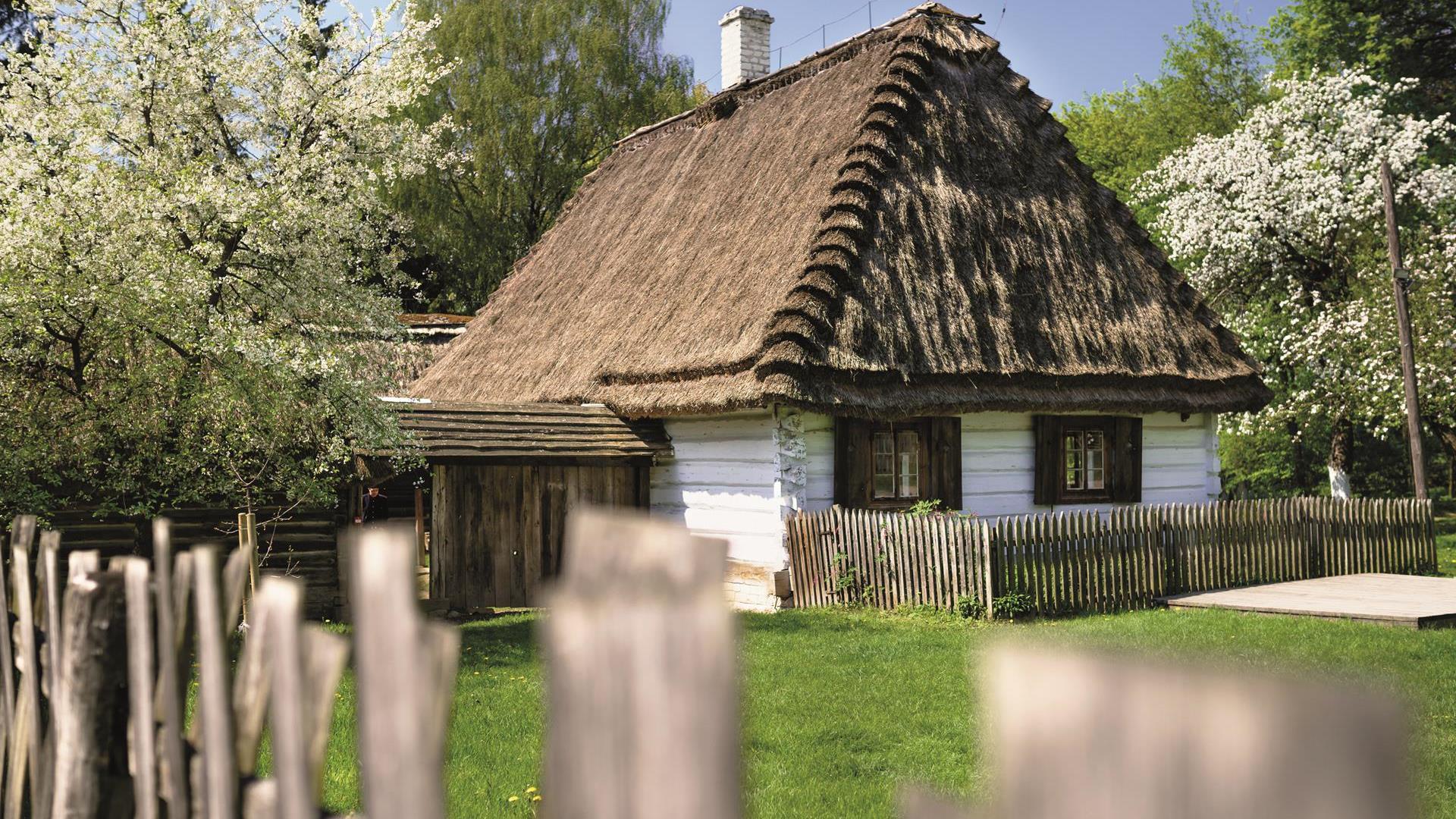
The Open Air Village Museum and the Botanical Garden
The vast green areas of the Lublin Open Air Village Museum are a place where time has stopped long ago. Here you can peek inside thatched country cottages, visit old workshops in a provincial town or see goats strolling along the country paths. The place follows the seasons. Harvest festivals, haymaking, harvest and dances are among its attractions, alongside traditional delicacies from the local inn. The museum is open all year round.
In the Lublin Botanical Garden of UMCS, you can feel like in Agnieszka Holland’s film The Secret Garden. Over 1,600 species of trees and shrubs, over 3,300 herbaceous plants and around 1,600 species of greenhouse plants grow there. Also, you will find large hundred-year-old trees here. Kościuszko Manor House and a small café are hidden among the greenery. The garden is open to visitors from April to the end of October.
Zemborzyce Lake
Lublin offers a chance to break out of the city without leaving it. likes to relax by the water on warm days. At Zemborzyce Lake, residents and tourists will find attractions aplenty. There is a sandy beach for those who like sunbathing and green areas for picnics or grilling. The largest Lublin forest complex, Dąbrowa, surrounds the lake. In the season, the Słoneczny Wrotków complex seduces with the water attractions. There is a whole park with pools, slides and paddling pools for the youngest. There is also a water equipment rental, a rope park and a 12 km long bicycle path surrounding the reservoir. To raise your adrenaline level, you can try water skiing, rent a sailboat or go canoeing on the swift Bystrzyca river.
At Zemborzyce Lake, you can also simply walk, pick fried fish and enjoy the surroundings. Peace and quiet allow for relaxation and detachment from the everyday.
